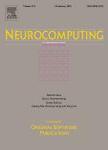版权所有:内蒙古大学图书馆 技术提供:维普资讯• 智图
内蒙古自治区呼和浩特市赛罕区大学西街235号 邮编: 010021

作者机构:Univ La Rioja Sci Comp Grp GRUCACI San Jose de Calasanz 31 Logrono 26004 Spain Univ Granada Sci Comp Grp GRUCACI Santander 1 Melilla 52005 Spain Univ La Rioja Sci Comp Grp GRUCACI Madre de Dios 53 Logrono 26006 Spain European Space Agcy Adv Concepts Team Keplerlaan 1 NL-2200 AG Noordwijk Netherlands Univ Southampton Southampton SO17 1BJ Hants England
出 版 物:《NEUROCOMPUTING》 (Neurocomputing)
年 卷 期:2019年第354卷
页 面:49-60页
核心收录:
学科分类:08[工学] 0812[工学-计算机科学与技术(可授工学、理学学位)]
基 金:Spanish State Research Agency European Regional Development Fund [ESP2016-76585-R] European Space Agency through Project Ariadna Hybrid Propagation (ESA) [4000118548/16/NL/LF/as]
主 题:Artificial satellite theory Orbit propagator Hybrid propagation methodology Time series forecasting Holt-Winters Generalized additive models
摘 要:The hybrid methodology for orbit propagation is a technique that allows improving the accuracy of any propagator for predicting the future trajectory of a satellite or space-debris object in orbit around the Earth. It is based on modeling the error of the base propagator to be enhanced. Both statistical time-series forecasting methods and machine-learning techniques can be used for that purpose. The standard procedure for developing a hybrid orbit propagator requires some initial control data, that is, a set of precise ephemerides corresponding to either real observations or accurately computed pseudo-observations, from which to model the base-propagator error dynamics. It also needs tuning the time-series forecaster from those control data. We propose an improvement to the hybrid methodology for orbit propagation, based on fitting new hybrid propagators from others previously developed for nearby initial conditions, which avoids the need for both the control data and the tuning process, and achieves comparable results. (C) 2019 Elsevier B.V. All rights reserved.